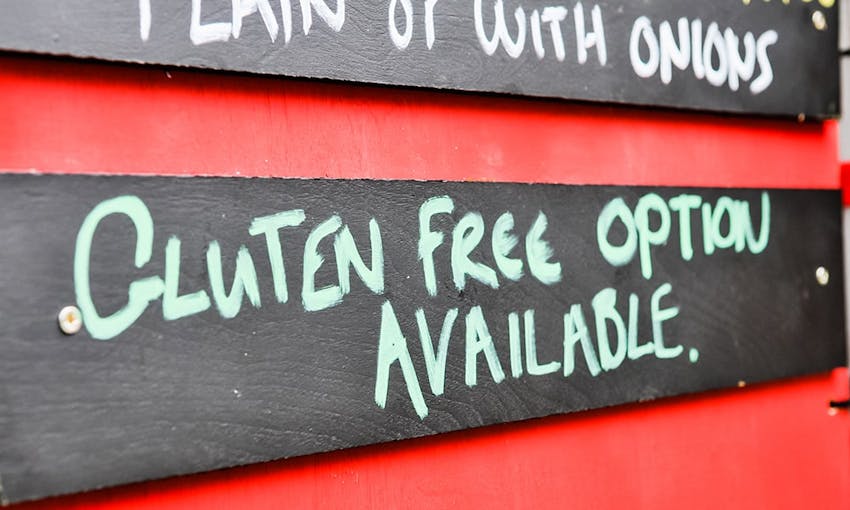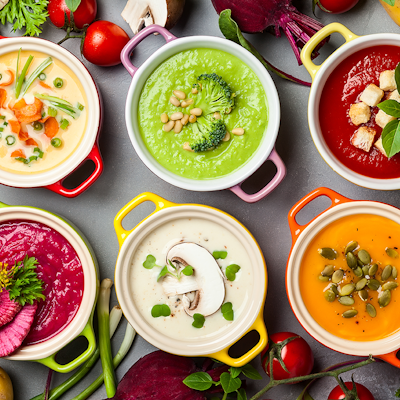Coeliac Awareness Week
Here at Erudus, we’re all about allergen awareness – in fact one of our platform’s most important features is its allergen and nutritional data search. So of course we’re participating in Coeliac Awareness Week, which is organised by Coeliac UK, the charity that’s been helping people with coeliac disease and other gluten related conditions for over 50 years.
Running from 9-15 May, Coeliac Awareness Week Is about creating new opportunities for earlier diagnosis of coeliac disease in children, but for our part we’re taking things back to basics – presenting our guide to understanding coeliac disease and gluten intolerance….
What is coeliac disease?
Coeliac disease is an auto-immune condition which causes the body to react negatively to gluten. Gluten will trigger an immune response, which with prolonged exposure will damage the intestinal lining.
Without a diagnosis, if this continues it can lead to malabsorption and the inability for the small intestine to absorb nutrients into the bloodstream.
Essentially, if sufferers consume gluten they will suffer short-term pain and discomfort as well as long-term damage.
Who does it affect?
According to Coeliac UK 500,000 people in the UK currently suffer symptoms of coeliac disease.
Various other data indicates around 13% of the population are estimated to avoid gluten and follow a gluten-free diet – however, not everyone following a gluten-free diet does so because they are a coeliac.
What does coeliac disease look like?
The symptoms of coeliac disease and gluten intolerance can look similar.
Many symptoms relate to the body’s inability to digest food, among them diarrhea,bloating, gas, abdominal pain, acid reflux, constipation and vomiting.
After ingesting gluten suffers may also experience sneezing, itchy skin, headaches, fatigue, bone and joint pain, mouth ulcers, weight loss, blocked nose, wheezing, a tight chest, shortness of breath or a cough, anxiety and brain fog.
Some symptoms can be visible – itchy, red, watery eyes, raised itchy red skin, swollen or tingly lips, tongue, eyes and face, swelling on the mouth (and throat), hives, and dry red cracked skin.
Depending on the severity of the allergy and the amount of gluten consumed, some symptoms may be mild and some may be strong, but the following symptoms should be cause for concern – swelling, difficulty breathing, light-headedness, blue skin or lips, seizures and collapsing or a loss of consciousness.
Remember, it’s important to notice symptoms of an allergic reaction. This means both immediately – so that you can get the appropriate help quickly, and long-term – so you can receive a diagnosis and learn more about your condition, whether it’s coeliac disease or a gluten intolerance.
Is coeliac disease the same as a gluten allergy?
Not quite.
Coeliac disease is an autoimmune disease in which the consumption of gluten can cause permanent damage to the body.
With a wheat allergy, the immune response is more often temporary, and unlike coeliac disease a gluten allergy does not cause permanent damage to the small intestine – unless the allergy is severe enough to cause anaphylaxis.
Many people, when they refer to a gluten allergy, really mean a gluten intolerance. A gluten intolerance is also known as non-coeliac sensitivity and unlike a gluten allergy, cannot be outgrown (Coeliac disease can similarly not be outgrown).
Gluten intolerance causes inflammation throughout the body if gluten is consumed, and triggers similar symptoms to coeliac disease but without the same intensity of longevity or consequence.
What foods contain gluten?
Gluten is commonly described as ‘glue holding food together’ because of its elasticity, but it’s really a general name for the proteins found in many foods, including wheat, rye and barley.
You can expect to find gluten in pasta, bread, cakes, cookies, biscuits, cereals, crackers, pastries, patties, breakfast cereals, breadcrumbs, scones, baking mixtures and batter-fried foods.
However, gluten can also be found in many foods that you might not expect – including soups, sauces, salad dressings, Asian dishes, beer, sweets, hot dogs, imitation crab meat, ice cream, pre-prepared vegetables, crisps, processed meats, rice cakes, seitan, and soy sauce.
Sufferers should always check labels carefully.
Is gluten one of the 14 major allergens?
Yes, gluten is one of the recognised 14 major allergens, and as such food products containing gluten are legally obliged to declare so on their packaging.
However, when it comes to food labelling it’s important that consumers and Caterers do not assume that ‘Does not contain gluten’ means that a product is safe for those suffering from coeliac disease to eat.
A food product is only safe for coeliacs if it bears the declaration ‘Suitable for Coeliacs’ on the packaging. See our story on Mythbusing cereals containing gluten here for more information.
What else is gluten known as?
Gluten can sometimes be listed under the following names on food labels – Bulgur, cereal extract, club wheat, couscous, cracker meal, durum, einkorn, emmer, farina, flour, hydrolysed wheat protein, kamut, matzoh and matzoh meal (also spelled as matzo, matzah or matza), semolina, spelt, sprouted wheat, triticale, vital wheat gluten, wheat (bran, durum, germ, gluten, grass, malt, sprouts, starch), wheat bran hydrolysate, wheat germ oil, wheat grass, wheat protein isolate, whole wheat berries, glucose syrup, starch (gelatinized starch, modified starch, modified food starch, vegetable starch) and surimi.
What are alternatives to gluten?
Some naturally gluten-free foods are corn, rice, millet, buckwheat, amaranth, quinoa, soy, sesame, flaxseed, hemp, potatoes, nuts and legumes.
You can also substitute rice, buckwheat or corn noodles for pasta as well as tapioca flour, banana flour, coconut flour, hemp flour, chickpea flour, almond flour, quinoa flour, or amaranth flour for regular wheat flour.
Should people who don’t have coeliac disease avoid gluten too?
They can, but it’s a common misconception that going gluten-free is healthier or may have other health benefits. People with coeliac disease or gluten intolerances avoid gluten because they have to.
Sugar and fat content can be higher in gluten-free foods as these things are sometimes used to compensate for the flavour and texture which gluten adds.
How can caterers and home cooks be mindful of coeliac disease?
The most important thing any caterer or cook can do for a sufferer of coeliac disease is to avoid cross-contamination when cooking. Here's some tips:
- Use separate fryers or deep clean the regular fryer before preparing gluten-free food.
- For gluten-free cakes and baked goods do all preparation beforehand and include final packaging.
- Use a separate toaster for gluten-free products or use toaster bags in a regular toaster.
- Use a clean unused saucepan to boil gluten-free food.
- Have a separate set of utensils for gluten-free food,and avoid double dipping.
- Have a designated preparation area for gluten-free food, ensuring no cross contamination.
- Store all gluten-free alternatives such as sauces, drink powders and cakes in sealed, labelled containers.
Want some inspiration?
We’ve got some great gluten-free recipes on Erudus. Why not give one a try!
Allergylicious Allergy Friendly Carrot Cake
Gluten Free Chocolate Pancakes



